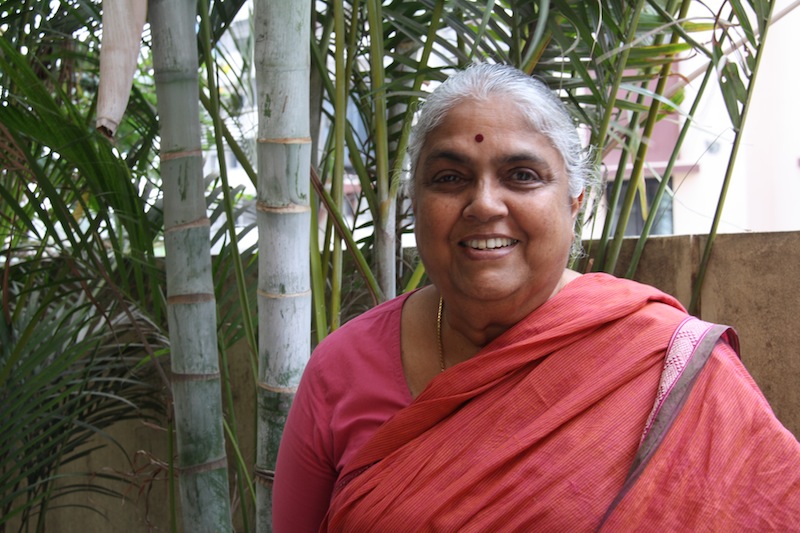A house so simple, yet so beautiful. This modest place of residence belongs to the founder of the GREEN Foundation, who in 1992, started the foundation to create awareness about the importance of diversity in agriculture that needs to be sustained. The concept of community seed bank was sown, which has taken deep roots now. This pioneering work is spreading in Karnataka and is now becoming a movement. Presenting you an interview of a young lady in her late seventies, fighting earnestly with a peaceful smile against corporate control over the basic unit of food production, Dr. Vanaja Ramprasad.
India used to grow more than a lakh varieties of rice
Despite of having a vast repository of diverse food crops around the world, we have narrowed the food base to just 12 crops of which wheat, rice and maize are the crops consumed majorly. Similar is the case with diversity within a particular variety of crop. For example, farmers in India used to grow more than a lakh varieties of rice alone, which has now been reduced to less than 100 varieties. We have practically lost all the indigenous varieties of vegetable crops and the diversity that existed in different agro-ecological zones across the country.
Certification are sold to farmers
Due to large scale chemicalization in agriculture, we have reached a situation where food needs to be certified as organic. This happens through a third party certification, which has escalated the price of organic food. As a result, only the elites in society can afford the organic products. Small farmers who by default don’t use chemicals in dry lands cannot afford to certify their food as organic, and hence are unable to compete in the market with the “certified” organic food. At times, certification is also sold to farmers, hence declaring food as organic without ensuring traceability. This is obviously an unhealthy trend in promoting organic farming. In India we are now at cross roads with the government’s policies that are supporting subsidies for chemicals and promoting trials of genetically engineered foods.
How could plenty and poverty co-exist?
Way back in the late 70s, when I started work in a hospital as a nutritionist, I was treating malnourished children. That was when India’s green revolution was at its peak and we had food in our granaries to the brim.
How could plenty and poverty co-exist? – To find answers to this question, I set myself on a long journey. I turned to academics to understand the macroeconomic situation in India. However, I understood the gravity of this problem when I travelled and interacted with people in different parts of the country, especially the farming community that eked out a living on small and marginal lands. After three decades of contemplation and actual work with farmers, I felt the need for completing the jigsaw puzzle, as to why we continue to battle with malnutrition and poverty while positioning ourselves as India shining.
Have I found my answers? Not completely! Unless there is a global change in the way we organize our lives the answers will not be easy!!
Can you bring back Bajra to me?
I can recollect an incident when the erstwhile Prime Minister Rajeev Gandhi once visited a remote village in Rajasthan. He told an old lady to ask him for anything. She surprised everyone by asking him, “I used to grow a variety of Bajra, which is now lost. Can you bring it back to me?” The lost variety could no longer be retrieved back.
This incident indicates the value people placed on what they were growing and the intrinsic worth of the crops they were used to, for their food. Unfortunately now the values have changed with the attached commercial importance. Hope we change for the good!